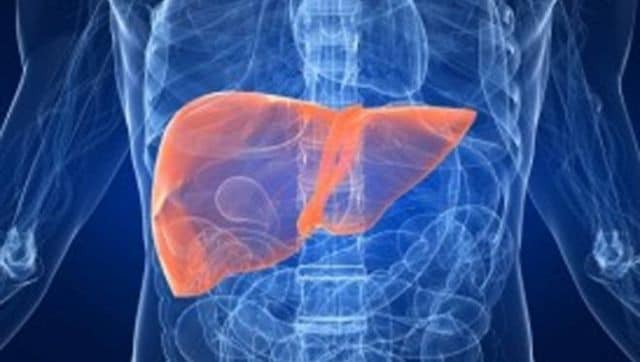Punjab CM Bhagwant Mann diagnosed with leptospirosis: What we ...
Punjab Chief Minister Bhagwant Mann has been diagnosed with leptospirosis after being admitted to Fortis Hospital in Mohali for a routine check-up following tropical fever. Leptospirosis, a bacterial illness, is among the most prevalent zoonotic diseases globally. It is often associated with poor sanitation and contact with infected animals read more
)
Punjab Chief Minister Bhagwant Mann has been diagnosed with a bacterial infection known as leptospirosis. PTI
Punjab Chief Minister Bhagwant Mann has been diagnosed with a bacterial disease known as leptospirosis.
The 50-year-old AAP leader was admitted to Fortis Hospital in Mohali for a routine check-up following tropical fever, the subsequent blood tests confirmed the infection.
According to a health bulletin released by the hospital on Saturday, the chief minister is receiving antibiotics and his vital signs are “completely stable.”
But what exactly is this bacterial disease? How does it spread, and what symptoms should one look out for? Let’s take a closer look at this condition.
What is leptospirosis?
Leptospirosis is a bacterial infection caused by the bacterium known as leptospira. It ranks among the most prevalent zoonotic diseases globally, often associated with poor sanitation and agricultural practices involving contact with animals or contaminated water.
According to the US Centres for Disease Control, the bacteria can survive in contaminated water or soil for weeks to months, spreading primarily through the urine of infected animals.
Humans can become infected by coming into close contact with an infected animal’s urine or through contamination of food, drink, or soil.

There are two primary forms of leptospirosis: icteric leptospira, which presents with jaundice, and anicteric leptospira, a milder form without jaundice. Additionally, leptospirosis can manifest as Weil’s disease, a more severe complication of the infection.
How does it infect humans?
Leptospirosis is most common in tropical and subtropical regions, especially following heavy rainfall or flooding, as the bacteria thrive in warm, moist environments.
Common sources of infection include rivers, lakes, and flooded areas. Activities that may elevate the risk of contracting the disease include swimming in contaminated waters, working in agriculture, or being in poorly sanitized areas.
Dr. Vikrant Shah, a consulting physician, intensivist, and infectious disease specialist at Zen Multispeciality Hospital, explained to The Hindustan Times that one can get leptospirosis “when the contaminated urine of the infected rat gets mixed with the rainwater and enters the body via the skin bruises, abrasions or lesions, making you fall sick.”
The bacteria can also spread through the mucous membranes of the mouth, nose, and eyes.

What are the symptoms?
According to the health website Medscape, Leptospirosis ranges in severity from no symptoms to a mild illness.
It generally takes 2-30 days to get sick after having contact with the bacteria that cause leptospirosis.
While begins with the onset of high-grade fever, conjunctival suffusion (red eyes), calf tenderness, headache, dry cough, nausea and diarrhoea. The infection in some cases can progress to serious conditions like jaundice, kidney or liver damage, inflammation of the membrane around the brain and spinal cord (meningitis), respiratory problems, and bleeding diathesis (hemorrhages).
Leptospirosis in some cases can progress to serious conditions and lead to respiratory problems, and bleeding diathesis (hemorrhages). Image for Representation. ReutersDr Shah told Hindustan Times, “Sometimes, pulmonary haemorrhage is also seen, which is acute bleeding from the lung and the respiratory tract, where the patient can cough out blood. One can also go into respiratory and renal failure, which could be life-threatening too.”
The illness can last from a few days to several weeks. Without treatment, getting better may take several months, states CDC.
How is leptospirosis treated?
Leptospirosis is primarily treated with antibiotics such as doxycycline or penicillin, which are most effective when administered early in the illness. Early treatment can help prevent severe complications and shorten the duration of sickness.

In more severe cases, hospitalisation may be necessary to provide supportive care, which could include intravenous fluids, oxygen therapy, or dialysis if the kidneys are affected.
Regarding Punjab CM Bhagwant Mann, a health bulletin from Fortis Hospital, citing Dr. R K Jaswal, Director and Head of the Department of Cardiology, reported significant improvement in Mann’s clinical parameters. The bulletin noted that he has responded well to treatment for increased pulmonary artery pressure, which had caused irregular blood pressure.
Dr. Jaswal highlighted that the chief minister is making progress, indicating a positive outlook for his recovery.
Precautions to take
To reduce the risk of leptospirosis infection, several precautions should be followed.
According to the CDC, individuals should avoid wading through dirty rainwater and wear gumboots during the rainy season. It’s also essential to take proper care of any injuries or cuts, and to wash hands frequently, especially after handling food or working in potentially contaminated areas.
Vaccinating pets against leptospirosis is also crucial, particularly for those frequently exposed to water or wildlife. Image for Representation/APAdditionally, people should steer clear of animals that appear sick or are known carriers of leptospirosis. Vaccinating pets against the disease is also crucial, particularly for those frequently exposed to water or wildlife.
Staying hydrated by drinking plenty of water is important, as is preventing water stagnation around the home. By following these guidelines, individuals can significantly reduce their risk of contracting leptospirosis.
With input from agencies















































